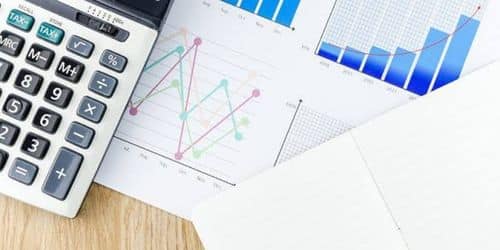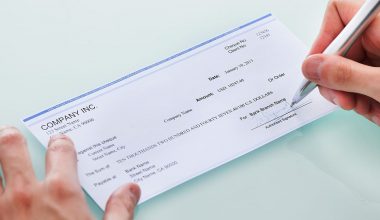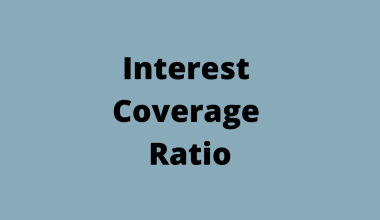Keeping financial records is one of the several things that businesses must prioritize in the course of their operations. If you are self-employed, one of the financial records you need for your small business is the profit and loss statement. Generally, a P&L statement compares the total revenue of a business with its liabilities and outlays. In essence, all of the company’s expenses lower the income. Other names for a P&L statement include the income statement, earnings statement, revenue statement, operational statement, statement of operations, and statement of financial performance. Additionally, we included possible questions and answers that you may have about the P&L statement.
What Is a Profit and Loss Statement for Self-Employed?
Entrepreneurs who are self-employed also need to prepare a profit and loss statement for their business. If you’re a sole proprietor or the boss of a small company, accounting can be tedious and intimidating. However, having a solid understanding of accounting concepts will help you make financial decisions that will keep your business prosperous.
The profit and loss statement for independent contractors is referred to as an income statement. This report examines the income (cash from sales) and outlays of your business over a set time frame, usually monthly, quarterly, or yearly. Or, to put it another way, a profit and loss statement will inform you of the profitability of your business.
Why is it vital to have a profit and loss statement?
Your profit and loss statement can be used to assess your business’s performance and identify potential growth prospects. Additionally, knowing your profits and losses can assist you in coming up with new concepts for business growth. A profit and loss statement also helps self-employed entrepreneurs and small businesses you make decisions about items like:
- Can the business afford to pay new hires something you can afford?
- Do you have the funds to purchase a brand-new company vehicle?
- Planning your taxes
- How well does your current business plan work?
These statements will also be scrutinized by investors to assess the long-term profitability of your business. Using the data, they evaluate your operational efficiency and the viability of your business concept. Lenders will also look at your P&L to see whether your firm is going to make a profit that will be sufficient to pay back future business loans and interest.
Information In The Income Statement
Profit and loss statements must include the information below:
- A list of all transactions in your company’s current account, including all purchases made with any credit cards.
- All transactions involving your petty cash, together with any related receipts.
- A summary of every source of your money, including cheques, credit card payments, and invoices. You should see a list of these on your bank statement.
- Details about any products or services you sold at a discount, including the discounted price.
- All cash transactions, including income and expenses. Keep your receipts, especially for any business-related travel or meal expenses.
You can manage your money wherever you are with Counting up, a 2-in-1 accounting and business account software that automatically generates a running P&L report.
What Is a Profit and Loss Statement Example
Generally, a P&L statement is based on accrual accounting, which tracks income and outlays as they happen rather than at the time when money is actually traded. A company’s sales, expenses, and net profit for the reporting period are shown in a reasonably straightforward manner on the P&L statement. Businesses typically release their P&L statements once a year, however, some do so quarterly. P&L statements often follow this format:
| Total Revenue | $896,700 |
| Less Cost of Goods Sold | $300,000 |
| Gross Profit | $596,700 |
| Gross Profit Margin | 56.67% |
| Less Expenses | |
| Accounting/Legal Fees | $10,000 |
| Advertising/Marketing | $15,000 |
| Depreciation | $8,000 |
| Utility Bills | $4,200 |
| Insurance | $18,000 |
| Interest/Finance Fees | $12,600 |
| Rent for Offices | $55,700 |
| Repairs/Maintenance | $9,400 |
| Wages/Salaries/Benefits | $200,000 |
| Other Expenses | $4,500 |
| Total Expenses | $337,400 |
| Net Profit | $259,300 |
| Net Profit Margin | 25.93% |
How Investors Evaluate P&L Statements
Lenders and investors compute a company’s risk level using this data. For consideration of loans, businesses must show their financial stability and capacity for timely payments. If the P&L statement reveals that a company does not earn enough revenue to adequately cover existing loan payments, banks are less hesitant to provide additional funds. On rare occasions, a drop in income may be a sign of debt default. Investors may be hesitant to invest in a firm that is highly leveraged, also known as high-geared, because there is less money available to pay shareholder dividends.
Types of P&L (Profit and Loss) Statement
Generally, there are two ways to produce a P&L statement. These are the cash approach and the accrual technique.
#1. Cash Method
The cash technique, or cash accounting method, applies when cash enters and leaves the business. The only function of this relatively simple system is to keep track of payments as well as receipts of money. Money is recorded as income when it is received in a transaction and as a liability when it is used to pay obligations. Additionally, this method is common for small enterprises and people who want to handle their own money.
#2. Accrual Approach
The accrual accounting method is used to record revenue as it is earned. This shows that a company using the accrual method records the amount of money it expects to earn in the future. For instance, a company that provides a good or service to a customer records the revenue on its P&L statement even though it hasn’t yet received payment. Liabilities are reported similarly to assets, even if the organization has not yet paid any expenses.
How to Prepare Profit and Loss Account
Anyone can create a profit and loss by simply clicking a button if you consistently and accurately record your income and expenses in your accounting system. The accounting system automatically generates your P&L. Moreover, building a P&L manually requires more time and is more challenging. Just be aware of them.
#1. Compile Essential Data
Before you can manually generate your P&L, you must collect the required data. The sources of revenue and outlays are both listed. This data can be found on bills, receipts, credit card statements, and bank account transactions.
#2. Make a Profit-and-Loss Statement
Periodic P&L is the fundamental P&L. A pro forma P&L is used by startup businesses without historical performance data to create a P&L. Therefore, the pro forma P&L, which is necessary if a corporation is searching for finance through a loan or through investors, is only a projection of what they expect to make and spend. To manually create a straightforward P&L, follow these steps:
- Assemble the crucial information on expenses and income (as noted above).
- Describe your sales. You can categorize them into various sorts of sales if doing so is advantageous or necessary for your business.
- Please provide your COGS.
- Deduct the cost of goods sold from the gross profit. The result will be your net profit.
- List your expenses. Create categories for every type of expenditure. This computation does not account for interest on business debt; it will be done later.
- Deduct the costs from your gross profit. It is what you have, EBITDA.
- List the company’s loan interest and deduct it from EBITDA.
- Taxes on net income must typically be estimated when creating a P&L because a return hasn’t been filed yet. List taxes on net income and subtract this sum in Step 7 from the balance that remains.
- List the costs of depreciation and amortization, and then subtract these from the amount left due after.
In completion of the final step, your P&L results are complete.
Statement of Profit and Loss Questions and Answers
Below are the profit and loss-related queries that bookkeepers and small business owners emailed me. My responses are listed after each query. These specifically refer to actions that have an effect on the profit and loss report, often known as the income statement.
Questions About Profit And Loss 1
Our everyday operating expenses were paid for with a loan.
We only made $875 in that entire month. We used the new loan for expenses while repaying an older loan that we had used for business expenses over a period of around two months.
I’m not certain how to record this because the loan is not seen as income. If I only subtract our expenses from our income, I’ll get a negative number. That might not be the best course of action, I’m not sure.
Answer:
If your income is less than your expenses, your financial situation will result in a loss (on the profit and loss report or income statement). This is perfectly acceptable, especially if you borrow money (which isn’t considered income) and use it to pay for business expenses.
A profit should eventually be realized as your company grows and you start to create cash and spend less than you earn. Every company transaction is recorded in the books on the balance sheet or the profit and loss statement, respectively.
Questions About Profit And Loss 2
Can a trucker’s wife, who is a shareholder and doesn’t drive, report her travel expenses when the two of them are on the road together?
Answer:
In general, you cannot deduct your wife’s travel costs if she is not one of your employees and is not traveling for work. You may write off her expenses if she was an employee of your business and accompanied you to a conference pertaining to your trucking business.
She may be a shareholder, but if she’s just accompanying you as your wife, her costs cannot be written off as a proper business expense as she isn’t bringing in money for the business.
Questions About Gain And Loss 3
I’m finishing up a P&L. If you rent a product (revenue), but then you have to return the “resolution” (a deposit in and of itself), how is that coded? Is it a cost per item?
Answer
The same holds true for any deposits that tenants or landlords have received. A deposit should frequently be recorded on the balance sheet as a liability with the designation “Security Deposit Returnable when it is initially received from a customer renting or hiring an item. The real rental cost, which is displayed on the P&L as income, does not include it.
The refund must be allocated to the same balance sheet account in order to reduce it if the renter receives their entire security deposit back. A security deposit is paid with the idea that money will either be returned to the tenant at some point or used to repair any damage they caused, therefore it is not seen as income. Returning the deposit is not an expense or a cost of goods sold, so it shouldn’t affect profit and loss.
What is a profit and a loss statement?
When total expenditures and expenses are subtracted from total income and revenue, the result is a profit and loss statement, often known as an income statement or a P and L statement.
What is a profit and loss statement for dummies?
The P&L statement demonstrates a business’s capacity to produce sales, control costs, and make a profit.
Where can I find my profit and loss statement?
The P&L can be found in the yearly financial reports that are distributed to shareholders by law and issued by all publicly traded corporations.
How do you create a profit and loss statement?
A Profit and Loss Statement’s Format
- Track your revenue.
- Determine the cost of sales.
- Determine Your Gross Profit
- Calculate your overhead.
- Calculate your operating income.
- Make adjustments for additional income and/or expenses.
- Net Profit
Why do I need a profit and loss statement?
A P&L statement reveals whether a business can make money by raising sales, cutting expenses, or doing both.
What are the benefits of a profit and loss statement?
It gives you an overview of all earnings and pertinent costs and expenses for a certain historical period, so you can see what you’ve earned and what you’ve spent.
Conclusion
You can’t possibly run a business without having a financial record. Trust me, it’s a huge risk. You must measure your financial strength as a self-employed entrepreneur with a profit and loss statement.
What Is Profit and Loss Statement FAQs
What is the different between profit & loss and the income statement?
There’s no difference between the income statement and the profit and loss account. The income statement is another name for the profit and loss statement.
What is the importance of a profit and loss statement?
It’s used to make critical decisions about the business. It shows clearly whether the company’s operations make a profit or a loss after all expenses are taken into account. So, if the company needs to, it can take steps to fix things.
- INCOME STATEMENT: Formats, Examples, and How To Prepare One
- Balance Sheet vs. Income Statement: Examples, Differences & Relationship
- Form 1098 Mortgage: The Interest Statement(Opens in a new browser tab)
- Balance Sheet vs. Profit and Loss Statement: Relationships & Differences






